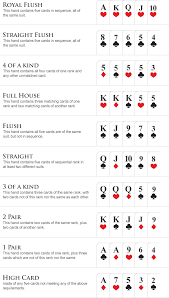Poker is a game that requires strategy, skill, and critical thinking. In this article, we will explore the concept of levels in poker, from basic to advanced thinking, and how it can help you improve your game.
In tournament poker, a level refers to a period of time where the blinds remain the same. With each subsequent level, the blinds (and possibly antes) increase. This is an important aspect of poker tournaments, as players need to adjust their strategy accordingly to maximize their chances of winning.
However, in this article, we will focus on the levels of thinking in poker, which are just as crucial for success at the table. Pokerologist Lou Krieger defines five levels of thinking:
- First Level: What cards do I have? This is the most basic level of thinking, where you consider your own hand and its strength.
- Second Level: What do my opponents have? At this level, you start to think about what your opponents might be holding, taking into account their playing style and table image.
- Third Level: What do they think I have? This is where things get interesting. You start to consider what your opponents think you are holding, based on their observations of your play and your table image.
- Fourth Level: What do they think I think they have? This level involves thinking about what your opponents think you are thinking about them, which can be a complex and challenging thought process.
Third Level Play: The Art of Representation
The third level of thinking is particularly important in poker, as it allows you to represent different hands and create the illusion of having a stronger or weaker hand than you actually do. This is known as "third-level play" and requires a deep understanding of your opponents' thought processes.
By representing different hands, you can manipulate your opponents' perceptions of your hand strength, making it easier to get them to fold or make mistakes. This level of thinking also involves anticipating what your opponents might think you are holding, based on their own playing style and table image.
Thinking Takes Time
Mastering the levels of thinking in poker takes time and practice. As a beginner, it's essential to focus on one level at a time, gradually building up your skills and understanding of the game.
By recognizing that your opponents are also thinking about you, you can gain an edge over them by anticipating their moves and adjusting your strategy accordingly. This is particularly important in tournament poker, where the blinds increase with each level, making it crucial to adjust your strategy to maximize your chances of winning.
****, the levels of thinking in poker are a critical aspect of the game, requiring players to consider multiple factors simultaneously. By mastering the first, second, and third levels of thinking, you can improve your game and increase your chances of success at the table.
As Lou Krieger so eloquently puts it, "If you realize that your opponent is thinking about what you might be holding as well as thinking about what you figure he has in addition to playing his own cards, you're already getting a leg up on the learning curve."
By incorporating these levels of thinking into your game, you can take your poker skills to the next level and become a more formidable opponent at the table.
